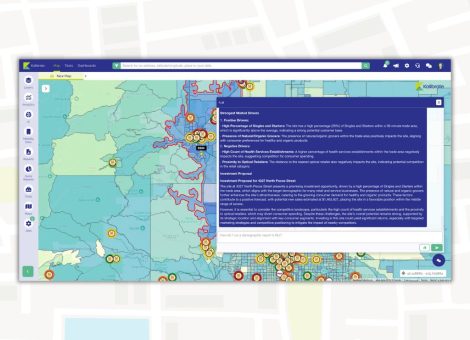How to leverage customer analytics to improve marketing effectiveness
In our ongoing series about the myriad applications of operational and customer analytics that can be derived from a real estate site selection model, let’s take a look through the eyes of a marketer.
Utilizing customer analytics
I first discovered the utility of leveraging the insights from real estate site selection modeling for marketing purposes over 15 years ago. Today, I’m still surprised at the extent to which organizations overlook the many opportunities that these insights can provide to marketers.
Here are just three examples of ways you can use customer analytics to drive your marketing campaigns:
Campaign targeting
No single variable is a more important determinant of campaign success than getting your message to the right targets and skipping the rest. Most firms have a broad understanding of who their customer is, and those that have a real estate site selection model have detailed customer analytics as a critical component of their forecasting model. However, few have leveraged customer analytics by extrapolating it to their addressable prospect universe and doing it in a repeatable way that can be improved upon over time. A multi-variate profile, where the contributing weights of specific variables are known, can readily be extended into a statistically derived prospect acquisition model. A properly constructed prospect model eliminates households that are a) out of profile, b) outside of the brand’s geographic trade areas, and c) in the low ranks of the prospect model’s ranking schema.
Three benefits to marketers are immediately realized:
- Low-potential targets are eliminated, saving money from needless marketing investment
- Budgets can be concentrated within the high potential value prospect pool, enabling increased frequency
- Model rank scores, drivetime, and key variables can all be independently evaluated in campaign response analyses, enabling continuous improvement
Local marketing
Ask any local marketer about their territory, and the answer will be “my market is different”. OK, but specifically—different how? When geospatial analytics and marketing science are combined, detailed customer analytics can be easily isolated within any geographic boundary, whether a region, a DMA, or a particular location’s trade area. These geographically distinct insights are invaluable for local marketers, providing a fact base for decision making and marketing action. Combined with a prospect acquisition model, examples of business questions that can be answered include:
- In what areas is my share of the addressable target market over penetrated? Where are we underpenetrated?
- Based on any geography’s Value g=’ap—the difference between its current and potential performance—where should marketing resources be invested to generate the greatest upside business results?
- How should the marketing message be positioned in order to appeal to the target audience considering their lifestyle preferences, attitudes, and behaviors?
- Where are the competitive hot spots where the battle for market share is likely to be more intense, and within those hot spots, are there pockets of opportunity?
Media planning
Comprehensive customer analytics need not be limited to descriptions of income, age, gender, household composition, and other common variables. By overlaying media channel preferences across specific household-level target profiles, marketers can shoot with a rifle rather than a shotgun in developing media strategies and tactics. Instead of media plans built from the top down—where media vehicles are evaluated at the market level, predictive analytics and household-level propensity modeling allows planners to build from the ground up by taking the following actions:
- Define your target audience at the household level
- Identify the preferred media preferences for those households
- Apply geospatial analysis that scores the combination of different media vehicles to arrive at the optimal combination of mass and direct media tactics
Conclusion
Marketers should be closely connected to all aspects of any real estate site selection modeling effort. From vendor selection, to data and scope definition, throughout the model build process, and during the delivery of key findings—marketers will find ample opportunities to leverage their firm’s investment in real estate predictive analytics, improve marketing performance, and in many cases, do so with only marginal incremental investments.
To learn more about how Kalibrate helps its clients prioritize their capital investment opportunities, and to leverage the capital investments they’ve already made, contact us today.
Read more articles about:
Location-based marketing contentSubscribe and get the latest updates
You may unsubscribe from our mailing list at any time. To understand how and why we process your data, please see our Privacy & Cookies Policy
Related Posts
Location intelligence
AI in location intelligence: See it in action
See videos and screen captures of how AI has been integrated into the KLI platform.

Location intelligence
AI in location intelligence: The force multiplier for smarter site selection
AI is rapidly advancing in the world of real estate - this is the first blog in a two-part series on incorporating AI...


